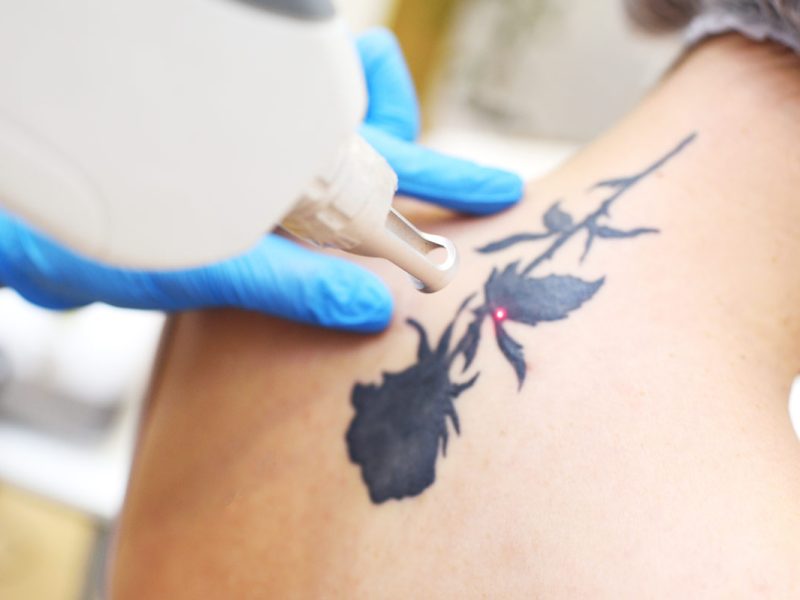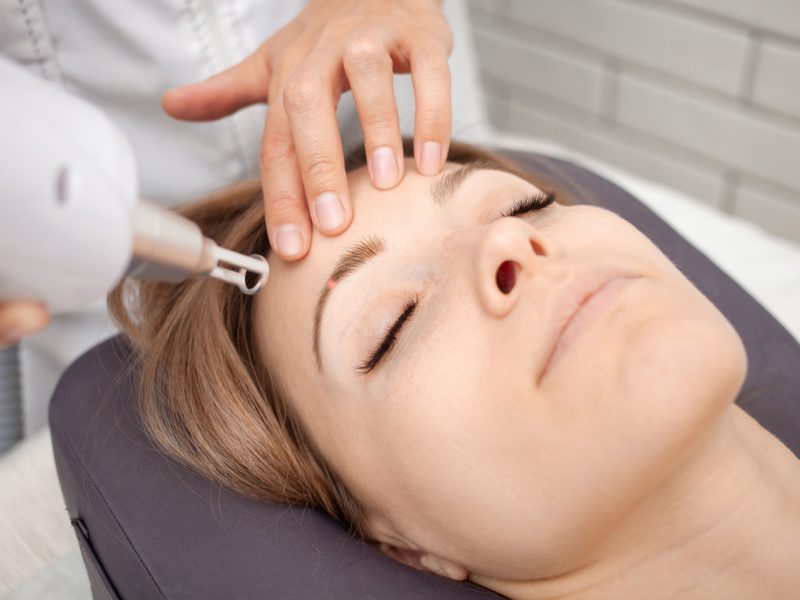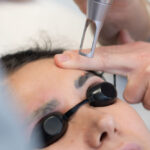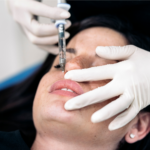- Jawline Treatment with Hyaluronic Acid
- Chin Augmentation for Harmonious Facial Features
- Lip Augmentation
- The Russian Lips (Doll-Lips) Technique with Hyaluronic Acid
- Effective Non-Surgical Rhinoplasty: Hyaluronic Acid Application
- Hyaluronic Acid Injection for Nasolabial Folds
- Remove Dark Circles, Tear Troughs & Eye Bags
- Cheek Augmentation – Cheekbone Injections

Inhalt des Beitrags
Tattoo Removal: A Comprehensive Guide to Laser Treatment
Tattoos are a creative form of self-expression. However, tastes or life circumstances sometimes change, and the once-loved artwork on the skin is no longer desired. Thanks to modern dermatological procedures, laser tattoo removal is a popular method to get rid of unwanted tattoos. In this blog post, we will explain in detail how laser tattoo removal works and what factors, such as the tattoo’s color, age, and position, can influence the outcome.
Laser Tattoo Removal - What to Consider
Laser tattoo removal is a procedure that uses laser light to break down ink particles under the skin. These fragmented particles are then naturally broken down and eliminated by the body. Since this process takes time, multiple treatment sessions are required, especially for large or colorful tattoos.
Influence of Tattoo Color:
The color of the tattoo plays a crucial role in the effectiveness of laser treatment.
- Dark inks, such as black, absorb laser light more efficiently and are therefore easier to remove.
- Light colors such as yellow, green, and light blue, however, absorb less light, which can make removal more difficult.
However, thanks to advanced laser technology, the removal of these colors has also become possible.
Influence of Tattoo Age:
The age of the tattoo also influences the removal process. Older tattoos naturally fade over time, which makes them easier to remove. The ink in older tattoos has often already partially broken down, making the laser process more effective.
Influence of Tattoo Position:
The position of the tattoo on the skin also affects the efficiency of removal. Tattoos in areas with thinner skin, such as the wrist or foot, can be more difficult to remove than those in more muscular or fattier areas like the upper arm or back.
Summary: The Path to Tattoo-Free Skin
The decision to have a tattoo removed requires careful consideration. Modern laser technology has made tattoo removal safer and more effective than ever before. It is advisable to consult an experienced doctor to achieve the best results and ensure skin health. Do not hesitate to arrange a non-binding consultation with us if you plan to have your tattoo lasered.
“Laser tattoo removal offers a way to restore the skin to its original state.” As leading experts in the field, we at Aesthetiqua have achieved impressive results, even in challenging cases. Although the color, age, and position of the tattoo can present challenges, continuous advancements in technology are expanding the boundaries of what is possible.

ARZT BJÖRN FREY
Doctor
FAQ
Frequently Asked Questions about Laser Tattoo Removal
How much does laser tattoo removal cost?
The cost of laser tattoo removal varies depending on the size, color, and number of sessions. At Aesthetiqua, we offer individual price calculations tailored to the specific needs of each client. Contact us for a personal consultation and a customized offer.
Can tattoos be completely removed by laser?
Generally, “yes”, with advanced laser technology, it is possible to completely remove tattoos.
However, the effectiveness depends on various factors such as the color, age, and position of the tattoo. At Aesthetiqua, we use state-of-the-art laser devices and individually tailored treatment plans to achieve optimal results.
How old does a tattoo need to be for laser removal?
There is no specific age limit for laser tattoo removal. Generally, a tattoo can be removed at any time, but older tattoos may be easier to remove due to the natural fading of the ink.
At Aesthetiqua, we assess each case individually and recommend the best time for treatment.
What does the skin look like after laser tattoo removal?
After a laser treatment, the skin may be temporarily red, swollen, or slightly irritated.
In some cases, blistering or scabbing may occur, but these usually heal within a few days.
It is important to care for the treated skin area appropriately and avoid sun exposure to achieve optimal results. For further questions or concerns, we at Aesthetiqua are always available.
24
Apr

ARZT BJÖRN FREY






 Lip Augmentation
Lip Augmentation The Russian Lips (Doll-Lips) Technique
The Russian Lips (Doll-Lips) Technique Effective Non-Surgical Rhinoplasty
Effective Non-Surgical Rhinoplasty Cheek Augmentation – Cheekbone Injections
Cheek Augmentation – Cheekbone Injections Remove Dark Circles, Tear Troughs & Eye Bags
Remove Dark Circles, Tear Troughs & Eye Bags Chin Augmentation
Chin Augmentation Jawline Treatment
Jawline Treatment Nasolabial Folds
Nasolabial Folds Remove Forehead Wrinkles
Remove Forehead Wrinkles Remove Frown Lines
Remove Frown Lines Remove Crow’s Feet
Remove Crow’s Feet Reduce Neck Wrinkles
Reduce Neck Wrinkles Lip Flip with Botox®
Lip Flip with Botox® Remove Bunny Lines
Remove Bunny Lines Botox® Treatment against Sweating
Botox® Treatment against Sweating Botox® for Teeth Grinding
Botox® for Teeth Grinding Tattoo Removal with Laser
Tattoo Removal with Laser Remove Permanent Makeup
Remove Permanent Makeup Permanent Laser Hair Removal
Permanent Laser Hair Removal Fat-Away Injection
Fat-Away Injection Hylase | Dissolve Hyaluronic Acid
Hylase | Dissolve Hyaluronic Acid Polynucleotide Treatment | PhilArt
Polynucleotide Treatment | PhilArt